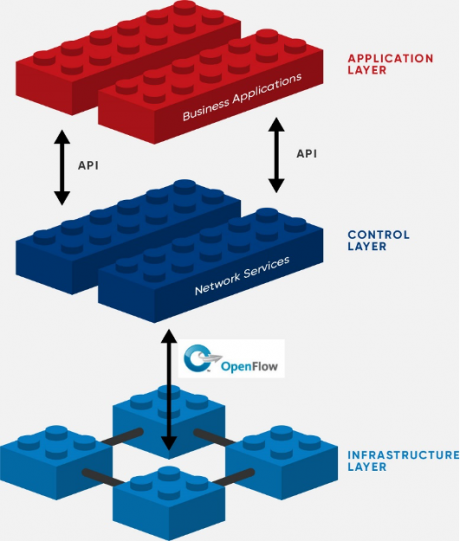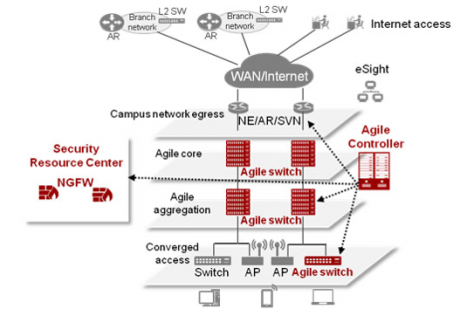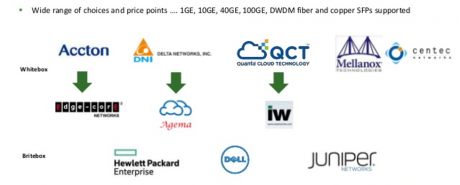SDN Architecture Explained: 5 Key Features
- January 15, 2021
- Posted by: Yunqi Ye
- Category: SDN NFV
SDN Architecture Explained: 5 Key Features
January 15, 2021 Category: SDN NFV
Software-Defined Networking (SDN) is an architecture that aims to improve network control such that enterprises and service providers are able to respond swiftly to changing business requirements.
In a software-defined network, there is a physical separation between the network control plane and the user plane. The three main layers of the SDN architecture consists of the application layer, the control layer and the infrastructure layer.
The network control is empowered as directly programmable which enables the decoupling of the network control and forwarding functions. The core infrastructure is virtualized for applications and network services.

SDN Architecture (Source: ONF)
SDN architecture is:
DIRECTLY PROGRAMMABLE
Network control is made directly programmable by isolating it from forwarding functions. The core arrangement is virtualized for applications and network services.
AGILE
SDN requires swift tuning of network traffic flow to meet fluctuating traffic demand. This feature is called “agile” and is enabled by separating control from forwarding.
Agile principles and a DevOps approach are used to manage and curtail the network service deployment lifecycle.

An Agile SDN adapting to rapid changes (Source: Huawei)
CENTRALLY MANAGED
Software-based SDN controllers contain network intelligence and keep a holistic view of the network. The applications and policy engines perceive it as a sole, logical switch.

A centrally controlled SDN to improve mobility management (Source: Research Gate)
PROGRAMMATICALLY CONFIGURED
As explained earlier, SDN permits the abstraction of Control Plane from the Data Plane. This is made possible by using Application Programming Interfaces (API). This is in contrast to the legacy network functions, which were distinct hardware boxes, with a fixed set of features. With APIs and software upgrades, these features can be altered and new ones added by keeping the same hardware. It shortens the whole lifecycle from planning to installation and operations & maintenance. In addition, it results in a lot of savings in initial expenditure as well as we running expenses.

SDN Programming and APIs
OPEN STANDARDS-BASED AND VENDOR-NEUTRAL
To develop interfaces for software-defined networks, selected vendors have formed an industry group. It will integrate both the new OpenFlow methodology and legacy distributed networks. By using APIs, the trend is to move towards a vendor-neutral, hybrid approach that can incorporate currently distributed protocols as well as OpenFlow.

Multiple vendors interworking together
In conclusion, SDN architecture isolates the SDN control plane and the SDN data plane of the networking stack. Operators can benefit from the features such as programmable, swift, centrally managed and vendor-neutral & open standards. They do not need to replace their hardware after every few years, as by software patches, new features can be added. Shortly, we will see many transitions from hardware-based solutions to software-based services.
Telefocal Asia is a vendor-neutral training provider that specialises in SDN, NFV, SD-WAN training courses. We are an accredited training provider that helps prepare candidates for the MEF-certification exams via the MEF-CECP and MEF-SDCP courses. For more information on our training topics and content, please visit our website at www.telefocal.com.
Follow us on LinkedIn to stay tuned to our weekly updates of the latest developments in the Telecom/IT industry and popular courses that we offer.
